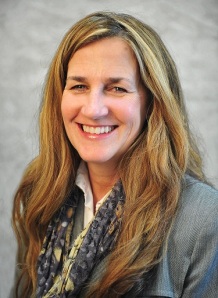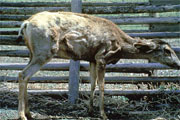I’m Robin Taylor, and I’m the garden manager at Wholesome Foods in Bridger. We’re in the middle of planting, but with every seed I put into the ground I’m reminded of my visits to this vegetable garden last summer – during a time that eventually became known as the Great Produce Rescue of 2012.
Wholesome Foods is owned by Dick and Patricia Espenschied. They’ve been farming in Carbon County –in the Clark’s Fork River Valley – for more than 15 years. They are committed to sustainable agriculture, and in addition to the vegetable gardens, they raise certified organic, free-range beef and hogs as well as heritage turkeys.
This is my first year “officially” working for the Espenschieds. The vegetable gardens here are substantial, and for many years, Wholesome Foods has supplied restaurants with produce and sold vegetables and meat at the Billings and Red Lodge farmers’ markets. But last spring, it looked like that tradition would be coming to an end.
No one knows for sure why, but last year in early June, the garden manager abruptly left. With so many other responsibilities and weeds rapidly taking over, the Espenschieds had decided – reluctantly – to till the garden under and give up on the vegetables for the season.
In Carbon County where I live, organic, locally-grown food isn’t always easy to find, but it’s a priority in the communities around here. Wholesome Foods was a key provider of healthy, affordable food – a critical farm-to-table link. When I heard about the dilemma the Espenschieds were in, I remember thinking, this just can’t happen!
Fortunately, I wasn’t the only one who was concerned. The abandoned gardens also caught the attention of the Red Lodge Area Food Partnership Council, a citizen-led group that supports sustainable agriculture and promotes the benefits of local foods. Food Corps Service Member Alyssa Charney was also concerned when she heard of the situation at Wholesome Foods.
Together, we decided to talk to Dick and Patricia and volunteer to provide the labor needed to save the garden. So we loaded up some beer and baked goods – figuring we might need some extra leverage – and drove down to Wholesome Foods.
We were speechless when we saw the garden. It was seven whole, wide acres of weeds that were waist-high in some places. It had been planted, but the young seedlings were struggling to come up without water and tending. As a lifelong gardener, I can tell you, it was hard to see, but we were all focused on saving this important, local food source.
Although the Espenschieds were concerned that we might not be up to the task, they allowed us to take over the garden. With some experience in commercial gardening, I took the lead. My comrades that day from the Red Lodge Area Food Partnership Council all stood by my side and played an important role getting the word out and rallying volunteers.
It was like triage those first couple of weeks. We hardly knew where to begin. We started irrigation and then harvested a mountain of lettuces. After that, we started the overwhelming task of weeding. Day after day, volunteers came to help. In time, our numbers grew, and by the end of the season more than 80 people came to help and contributed more than 600 hours of their time. What a great new definition of Community Supported Agriculture!
It was hard work, but it was an adventure too. There were no records of what was planted so we would come across all these surprises – unusual eggplants, carrots popping up out of nowhere. Thankfully, there were a few volunteers who were willing to sacrifice their taste buds to help identify the various peppers.
When I look back on the Great Produce Rescue of 2012, I will never forget those sunny mornings, with all of us in our wide-brimmed hats, bent over the rows, making conversation and working together. So many friendships were deepened and so many connections were made to the land, to good health, and to the Espenschieds. Wholesome Foods became the community’s garden and did so much to raise awareness in the area about the importance of local food and sustainable agriculture.
I didn’t set out last summer to land the job as garden manager at Wholesome Foods, but I had always wanted to farm in the Clark’s Fork Valley. The ground here is just so healthy and productive and the surroundings are beautiful.
I couldn’t ask to be in a better place in my life than where I am right now. I’m doing all I ever want to do.
In Bridger I’m Robin Taylor for the Alternative Energy Resources Organization. AERO has been linking people with sustainable agriculture and energy solutions since 1974. Visit us online at aeromt.org.
 Hey there, all you loyal newsblog followers!
Hey there, all you loyal newsblog followers!








